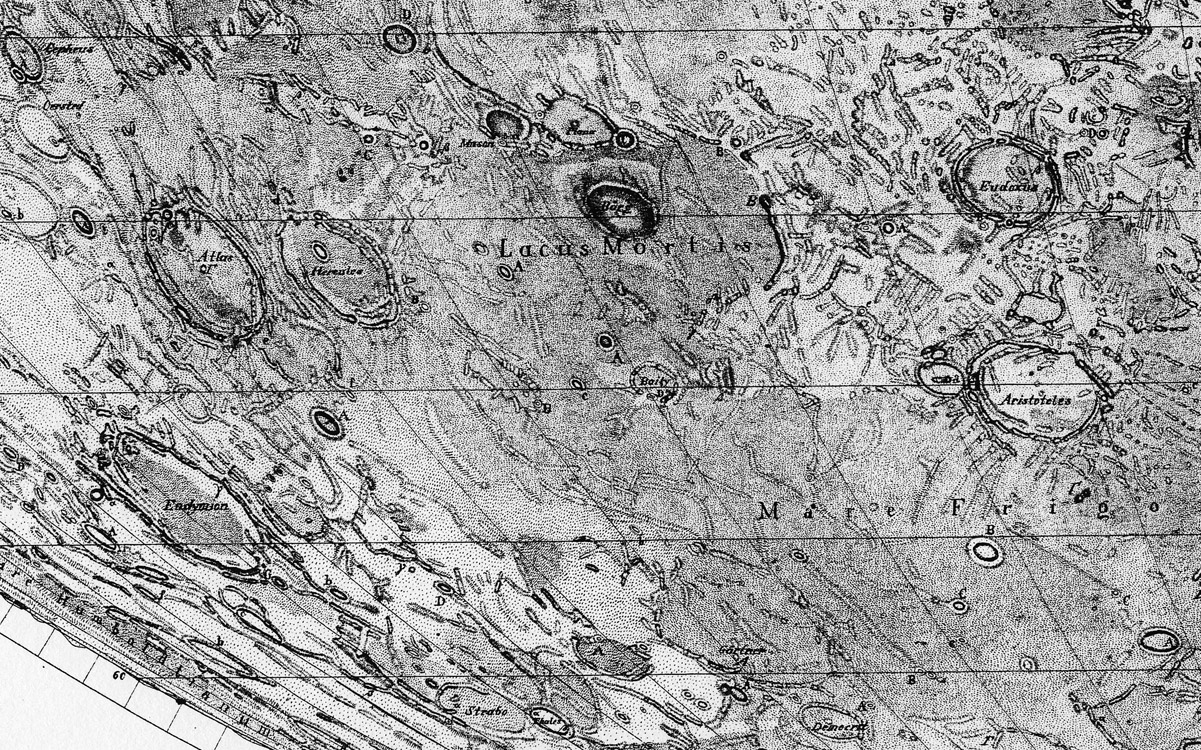
map by Johann Heinrich Mädler, 1834
The most important lunar documents of the 19th century are unavailable online and are rarely found even in large libraries. In 1834, Beer and Mädler published the first quadrant of their monumental chart Mappa Selenographica, and their book, Der Mond, followed in 1837. The book was never translated into English and their map, widely available even 100 years ago, has disappeared. The excerpt above from the map shows the immense amount of detail that Mädler had captured with the 3.75″ refractor purchased by Beer for their observations. In addition to depicting the topographic features he also indicated the hues of the surface by thousands of tiny stipples, with rays indicated by their lack. Mädler mapped so many craters that had never been shown before that he added more than 100 new names and created the system of using letters to designate craters near named ones. Der Mond was a thoroughly modern approach that correctly pointed out that the Moon lacked atmosphere and water, and hence was an unlikely abode of life. He noted that the lunar craters were unlike volcanic cones on the Earth, and concluded with the once classic phrase, the Moon is no copy of the Earth. Although I have only photocopies of sections of the famous Beer and Mädler maps (graciously provided by Ewen Whitaker) I refer to them from time to time to settle nomenclature issues. I wish the maps and book were online!
Related Links:
Bill Sheehan & Tom Dobbins (2001) Epic Moon - a history of lunar exploration in the age of the telescope.
Mädler’s lovelife
Yesterday's LPOD: Mystery Solved!
Tomorrow's LPOD: Not the Dark Side
COMMENTS?
Register, Log in, and join in the comments.



